To successfully perform brief minor medical procedures on infants and children, such as laceration repair, removal of foreign bodies from the ears or nose, and radiological examinations like chest x-rays and VCUGs, it is essential for the child to remain relatively still. This can be achieved through non-pharmacological methods such as distraction, effective communication, coping techniques (e.g., deep breathing, blowing bubbles, holding a caregiver’s hand), audiovisual aids, and physical holding.
CURRENT METHODS OF PHYSICAL RESTRAINT
Traditional methods for keeping children still during medical procedures, such as the papoose board, “burrito wrapping,” and “brute force” direct hands-on restraint, rely on physical force, often without the child’s consent. These forms of restraint can be distressing, increasing a child’s apprehension and anxiety. Such techniques should only be considered in emergency situations when no other alternatives are available.
The use of restraint and immobilization in pediatric care is a significant concern for healthcare professionals. There is a growing need for a less invasive, more psychologically sensitive approach to immobilization that prioritizes the well-being of both the child and the parent. The methods we choose for holding children during procedures ultimately reflect our values as a society.
HOW PEDIATRIC CARE HAS TRANSFORMED
EVOLUTION OVER THE YEARS
“In my 50 years of practice, I have witnessed various approaches to keeping children still during medical procedures, particularly in radiology. Traditionally, the focus was on manual restraint—often referred to as “brute force”—where medical staff physically held the child in place. While this method effectively prevented movement, it also caused significant anxiety and fear in young patients.”
- Dr. Frank L. Quattromani, Pediatric Radiologist
Over the years, mechanical devices like the papoose board, Pigg-O-Stat, and “burrito wrap” have been commonly used. These devices typically rely on straps and boards to secure the child, creating an environment that can be uncomfortable and intimidating. The “burrito hold,” frequently employed in emergency rooms, involves tightly wrapping the child in a sheet or blanket to restrict movement. Though these methods have been widely adopted, they highlight the ongoing challenge of balancing procedural necessity with a child’s comfort and emotional well-being.
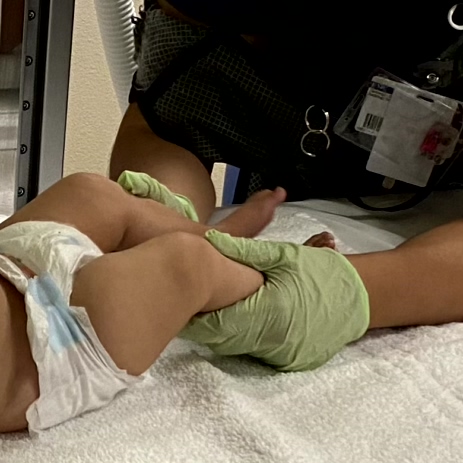

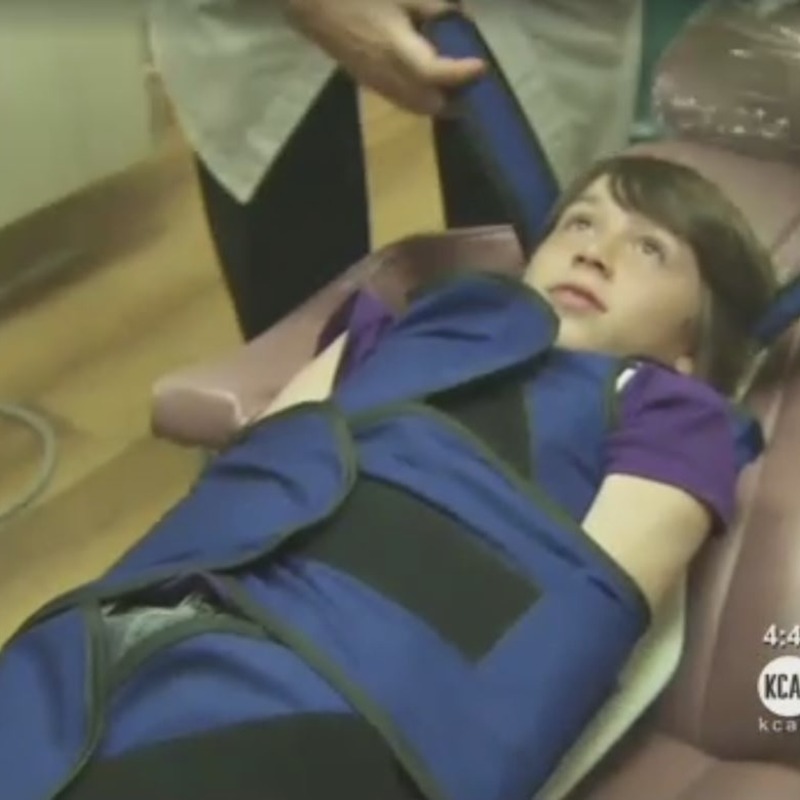
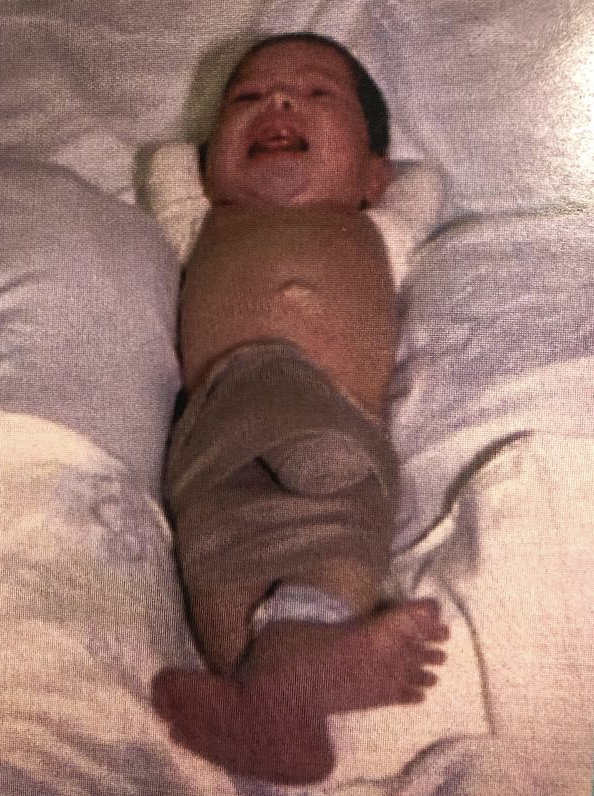

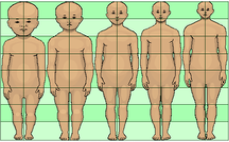
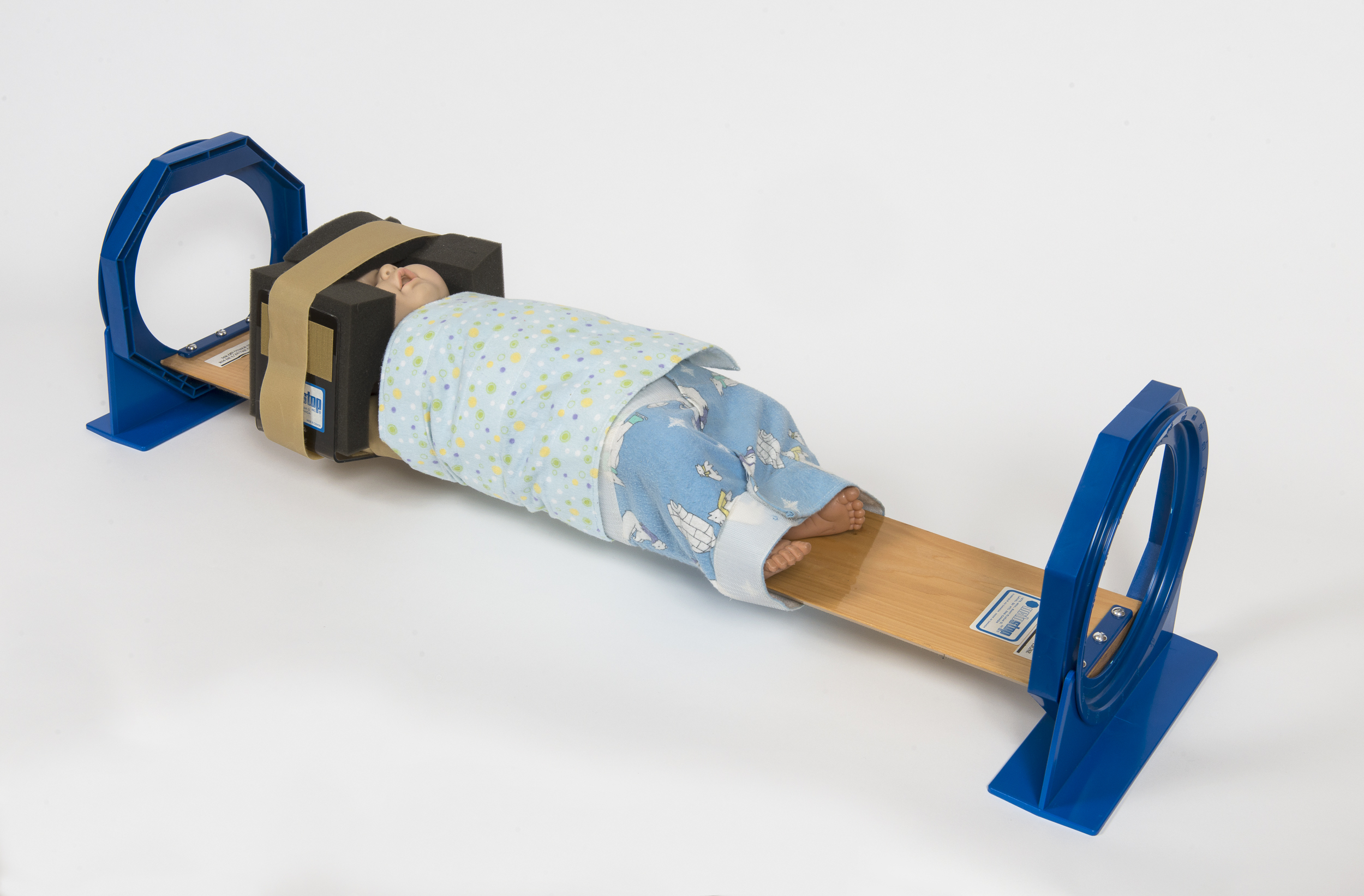
While methods like the Pigg-O-Stat and “Burrito wrapping” achieve the goal, they often result in heightened stress and discomfort for both the child and their caregivers.
Radiation and the voiding cystourethrogram (VCUG)
A pediatric voiding cystourethrogram (VCUG) is an x-ray examination of a child’s urinary bladder and urinary tract that uses a special form of x-ray called fluoroscopy and a contrast material. Fluoroscopy makes it possible to see internal organs in motion. The radiologist is able to view and assess the anatomy and function of the urinary bladder and ureters to observe for harmful reflux whereby urine moves from the bladder back to the kidney. Although the goal of the VCUG examination is to limit diagnostic radiation to the infants bladder and ureters, we frequently find extremities of the child, technologist and parent in the primary beam (see below findings from a retrospective cohort study done prior to the use of the new pediatric position holder). The results below show direct exposure to the primary beam only and not secondary scatter radiation.
RESEARCH RESULTS
Reviewed sample of 100 VCUG procedures in children under 2 years of age performed in 2018 at UMC for a total of 3,880 screen save images
| Instances | Count |
|---|---|
| Technologist Hands | 940 |
| Child Extremities | 840 |
| Adult Hands | 210 |
| Total | 1,990 |
51% of images showed instances of unnecessary radiation to the child, technologist, and/or other adults/parents assisting in immobilization of child.
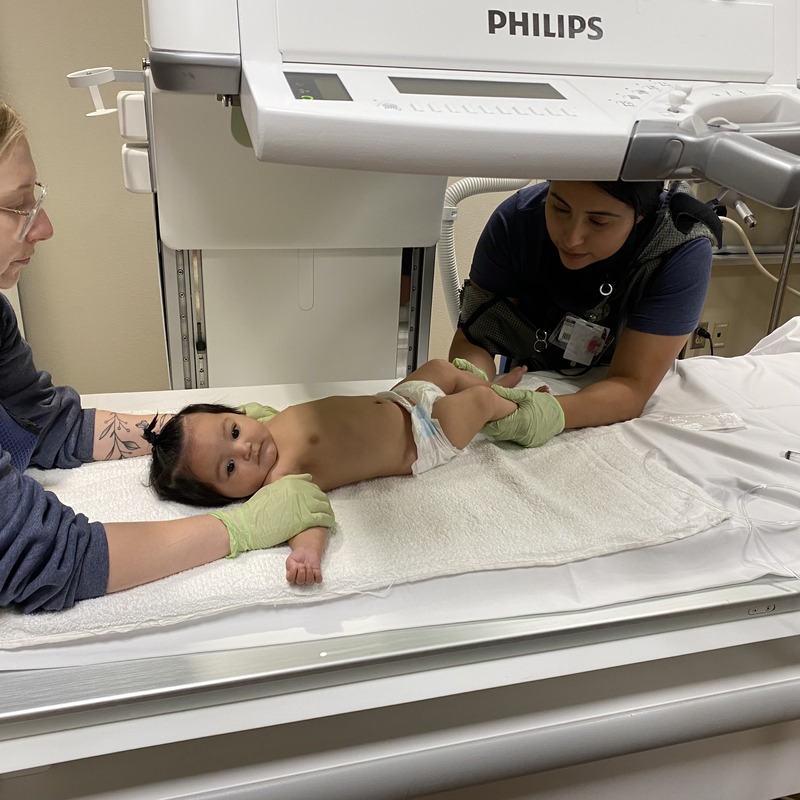
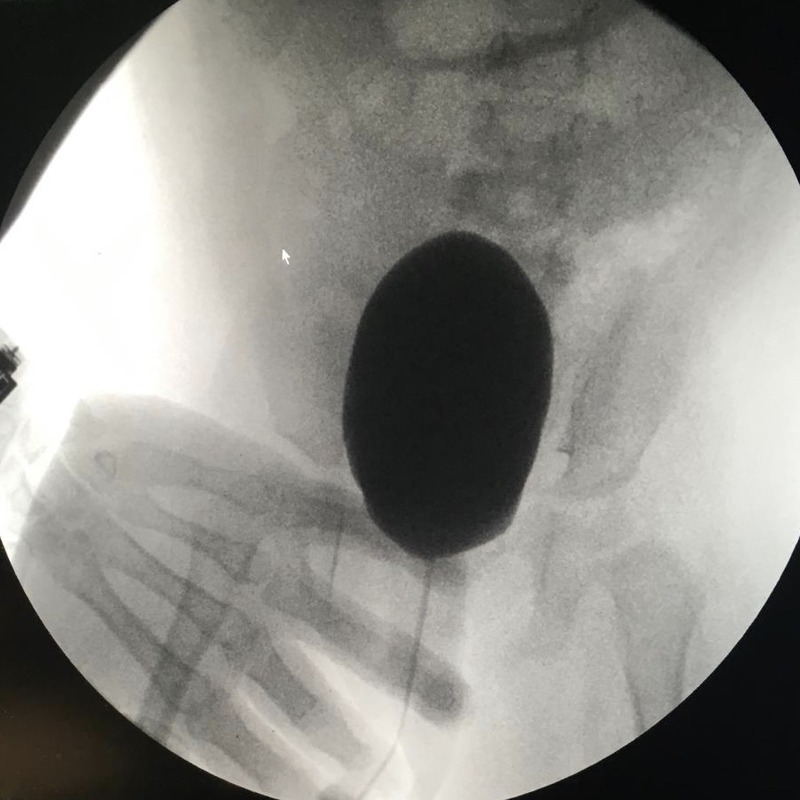
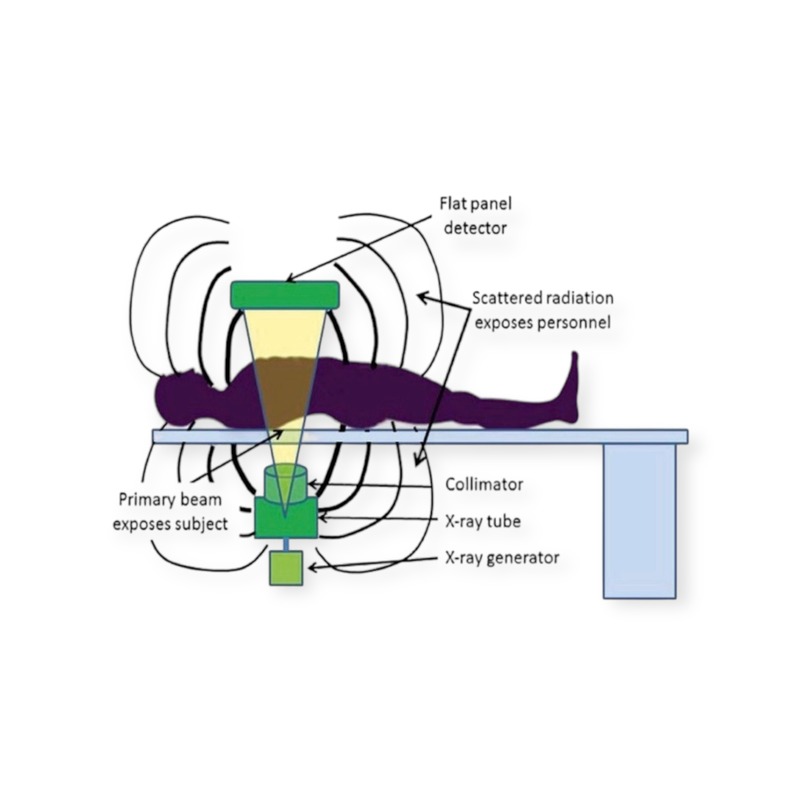
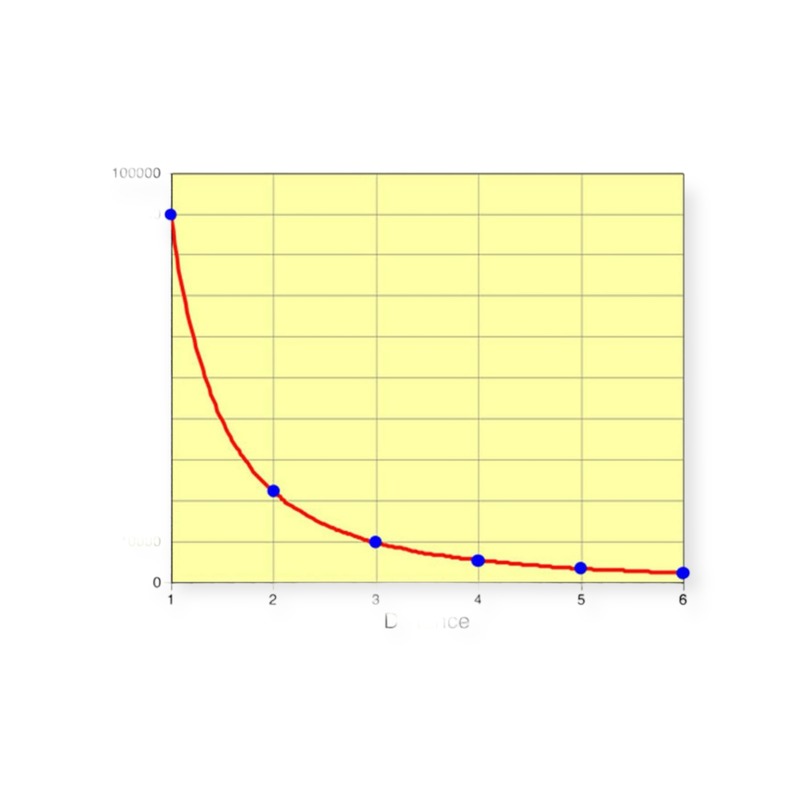
INTRODUCING THE PEDIATRIC POSITION HOLDER
Safety and customer care are of the foremost concerns in pediatric medical care, encompassing the well-being of the child, the parent or caregiver, and the healthcare provider. The Pediatric Position Holder (PPH) addresses a critical need in pediatric care by offering a standardized, gentle, and safe solution for pediatric medical positioning.
Hospitals and insurance companies place immense value on safety as it directly impacts patient outcomes, hospital ratings, and financial relationships. The PPH ensures that millions of everyday procedures, performed annually, are safer for all involved.
By reducing the need for manual restraint and minimizing the risk of bruising or injury, The Holder enhances the safety of medical procedures. The device's design respects the autonomy of young patients, reduces their distress, and ensures a more controlled and calm experience during medical interventions.
The inspiration behind the PPH is rooted in the urgent need for a safe, standardized solution for pediatric medical positioning, guided by the four fundamental principles of biomedical ethics as articulated by Beauchamp and Childress (2013):
Autonomy: The PPH respects the autonomy of young patients by reducing the need for physical restraint, allowing children to experience less distress and feel more in control during medical procedures.
Non-maleficence: By minimizing the need for manual restraint and reducing the likelihood of bruising or injury, the PPH adheres to the principle of non-maleficence, ensuring that no harm comes to the patient.
Beneficence: The PPH provides clear benefits by improving procedural accuracy and efficiency, reducing the need for repeat procedures, and enhancing overall patient care.
Justice: The PPH promotes justice by offering a standardized method of patient care that can be applied fairly across different medical settings, ensuring that all children worldwide receive high-quality care.
The PPH is versatile and can be used across various medical settings, including radiology, emergency rooms, and minor procedure units. Its design ensures that children remain comfortable, secure, and safe during procedures, helping to alleviate the anxiety and stress often associated with medical interventions. The PPH’s non-threatening appearance, featuring soft materials, can be enhanced with familiar concepts and/or decorative elements, providing children an opportunity to familiarize themselves with it ahead of the procedure. This pre-exposure to the holder can reduce the stress of introducing a foreign object immediately before a medical procedure, enhancing the child’s comfort and cooperation. For children with chronic illnesses who undergo repeat procedures, this familiarity can significantly add to their comfort, making each procedure less daunting and more manageable.
THE PEDIATRIC POSITION HOLDER:
AN OVERDUE IMPROVEMENT
The Pediatric Position Holder (PPH) is an innovative, child-friendly device designed for single-patient or multi-patient use. It is effective, safe, simple, and versatile, providing a standardized method for securely positioning children during medical procedures. Made from 1/2” thick, soft polyurethane closed-cell foam, it features no extraneous straps, boards, or hook-and-loop attachments, ensuring comfort and ease of use. The holder retains its position using material-based adhesion. The aim is to reduce the anxiety, fear, and PPH is used for short periods in highly monitored settings, offering the unique advantage of leaving the chest, abdomen, and pelvis free for unrestricted respiration and uninterrupted tube and line placement.
US PATENT # 2020/017828 A1

KEY BENEFITS:
- Child-Friendly Design: Reduces stress and anxiety and improves the experience for children, their parents, and healthcare providers alike.
- Comfort and Safety: Soft foam construction with no harsh attachments.
- Effective and Versatile: Suitable for various medical procedures, ensuring consistent and gentle care.
- Enhanced Procedure Quality: Allows for better positioning and access without compromising respiratory movements or tube placements.
HOW THE PEDIATRIC POSITION HOLDER TRANSFORMS PATIENT CARE
MAXIMIZES CONTACT, MINIMIZES MOVEMENT
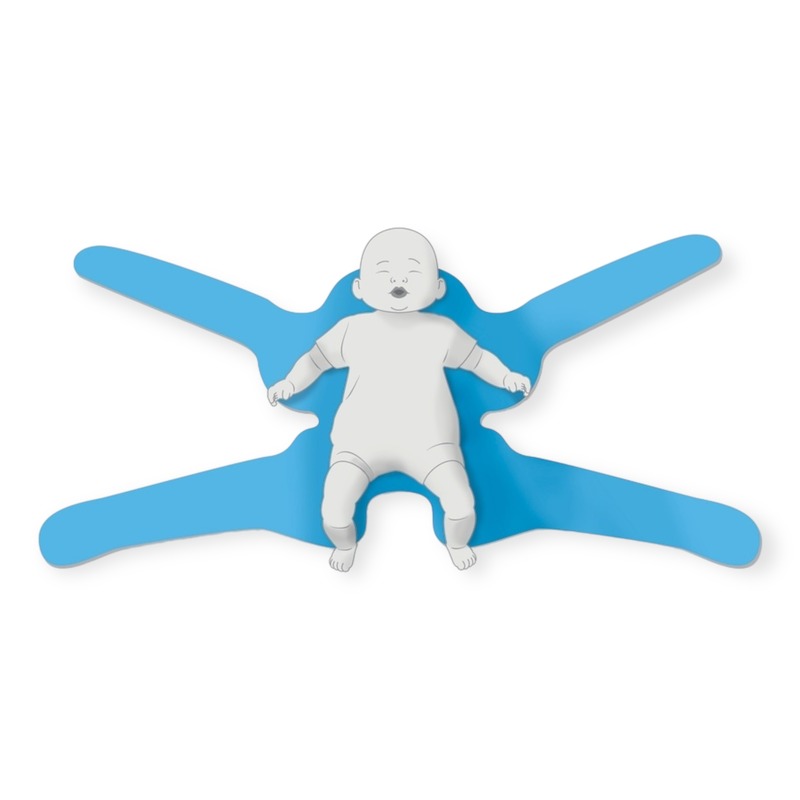
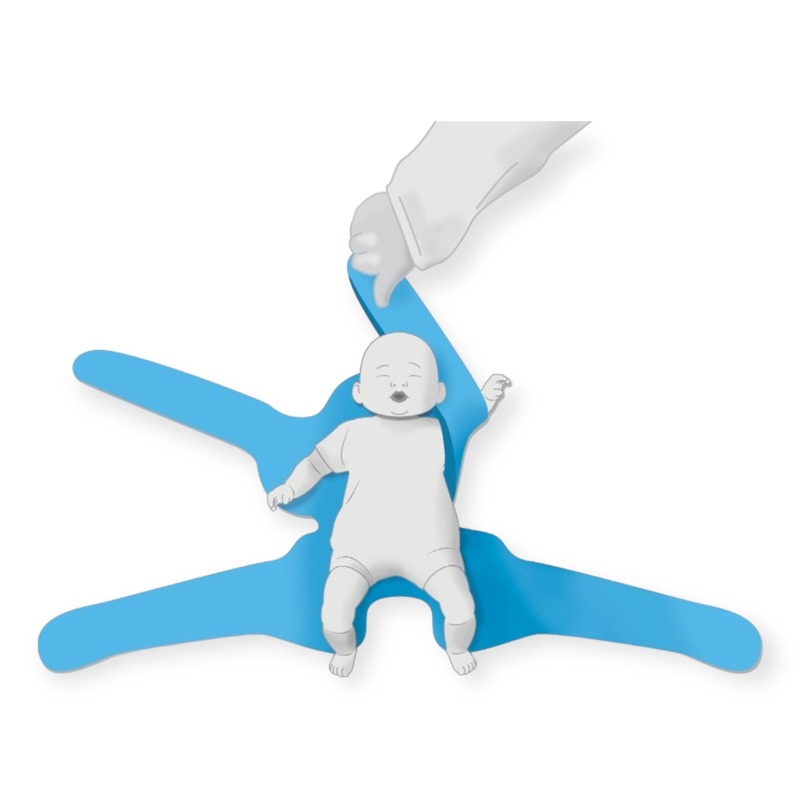
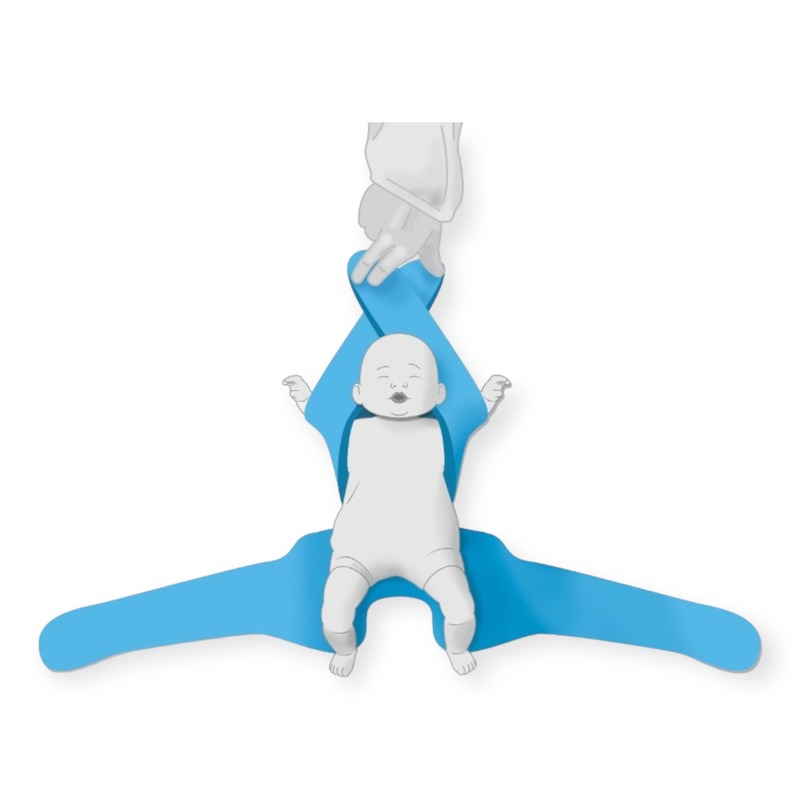

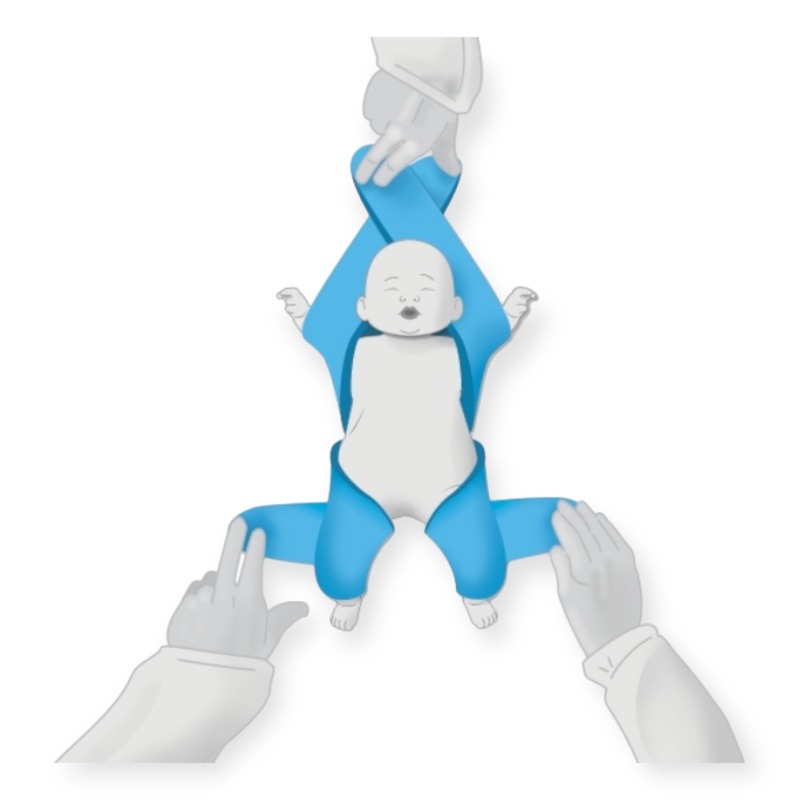
INSTRUCTIONS FOR USING THE PEDIATRIC POSITION HOLDER
- Prepare the Surface: Lay the Pediatric Position Holder (PPH) on a flat working surface, such as a table or medical imaging machine. Alternatively, the device can be used as an additional soft wrap option if the provider is sitting with the child.
- Position the Child: Place the child on the device, ensuring they are comfortably centered.
- Secure as Needed: Wrap the device around the specific area requiring stabilization. For example, to secure an arm for IV placement, wrap the holder around the arm only.
- Adjust for Optimal Hold: The holder is versatile and minimally invasive. Secure only the necessary extremities, whether it is one arm or all four extremities, based on the procedural requirements.
- Ensure Comfort and Safety: Check that the child is comfortably positioned and that the holder does not interfere with any medical lines or tubes.
Notice how the Pediatric Position Holder secures the arms and legs while the chest and abdomen remain visible and free.
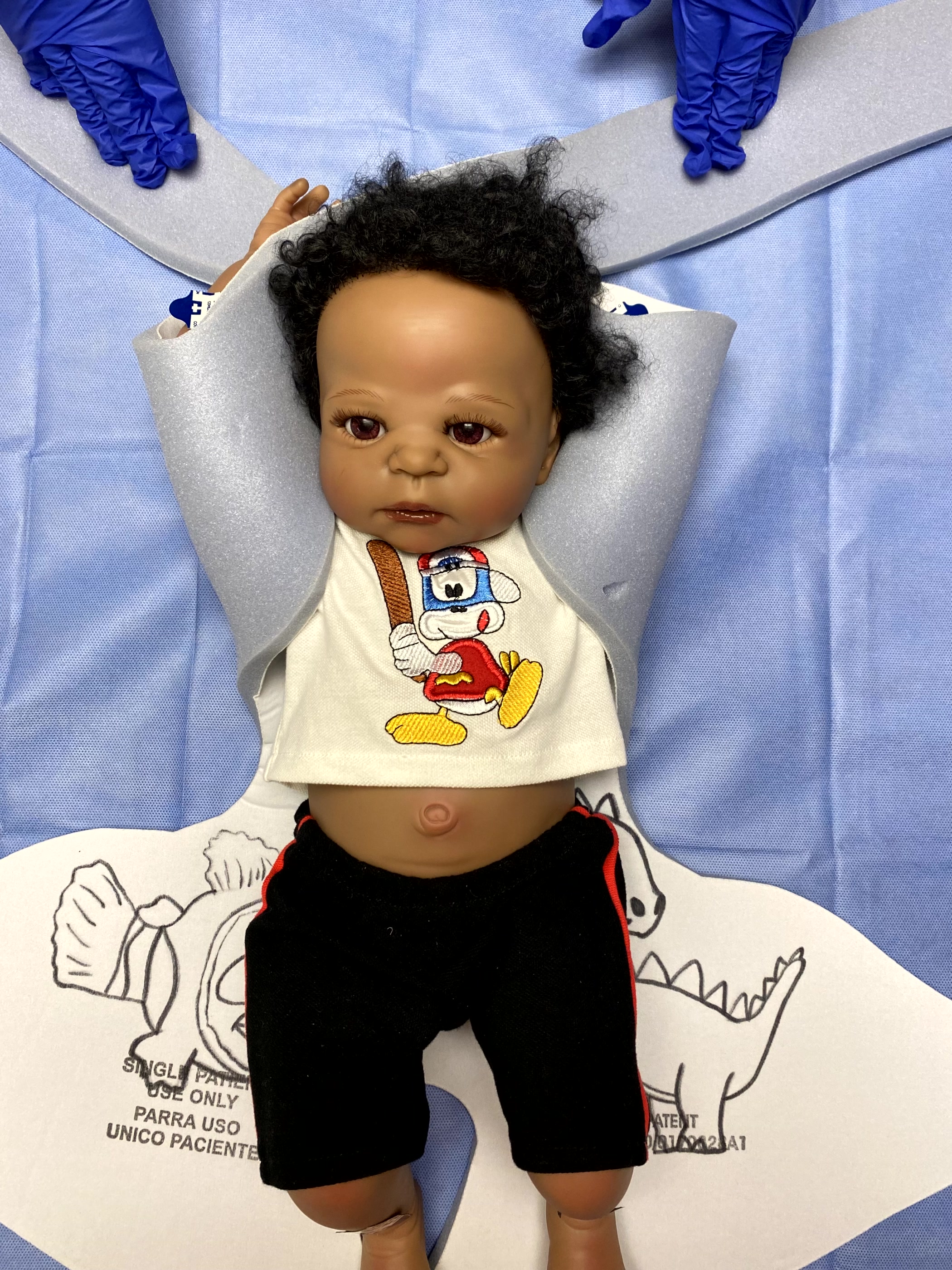
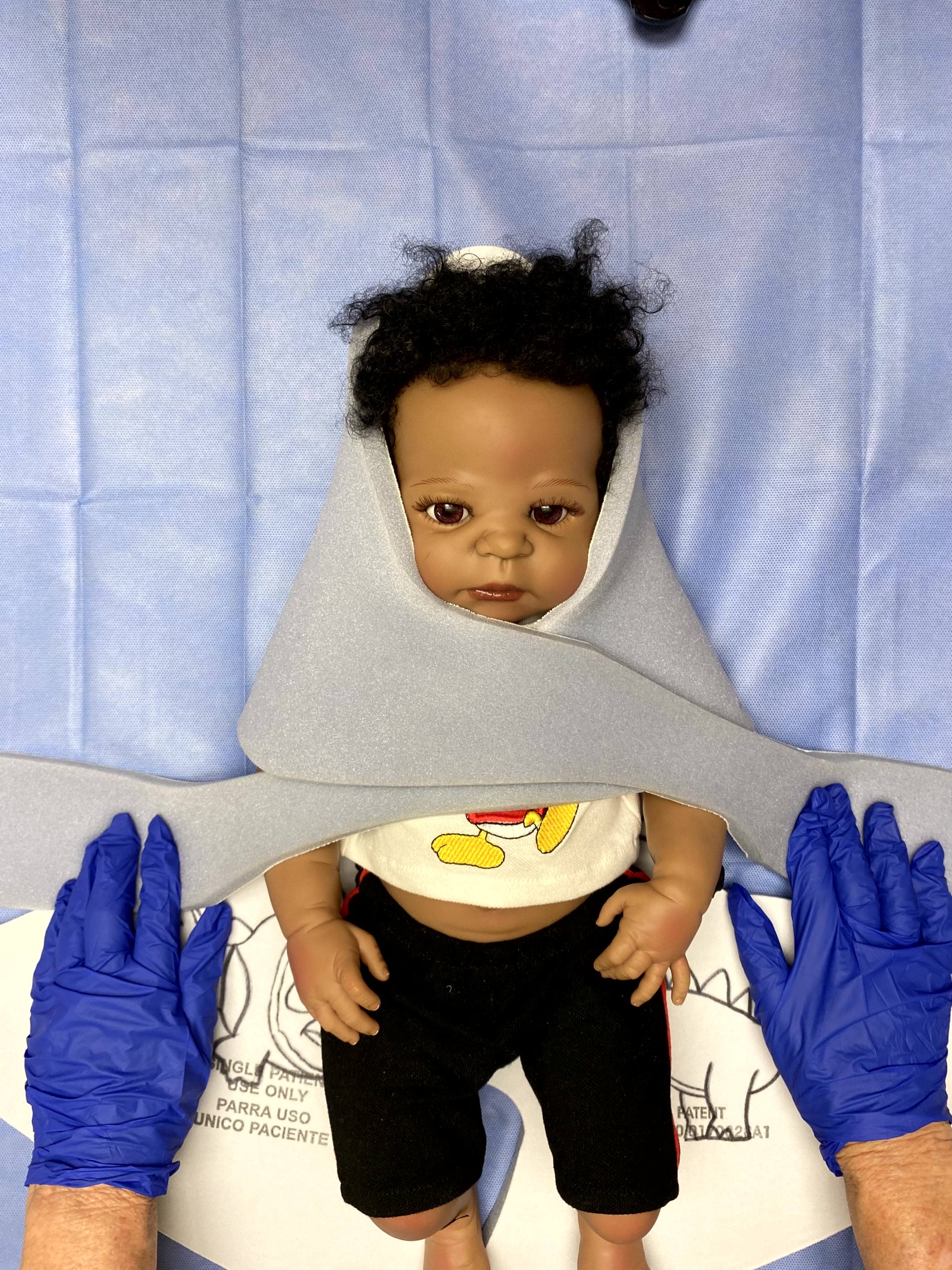



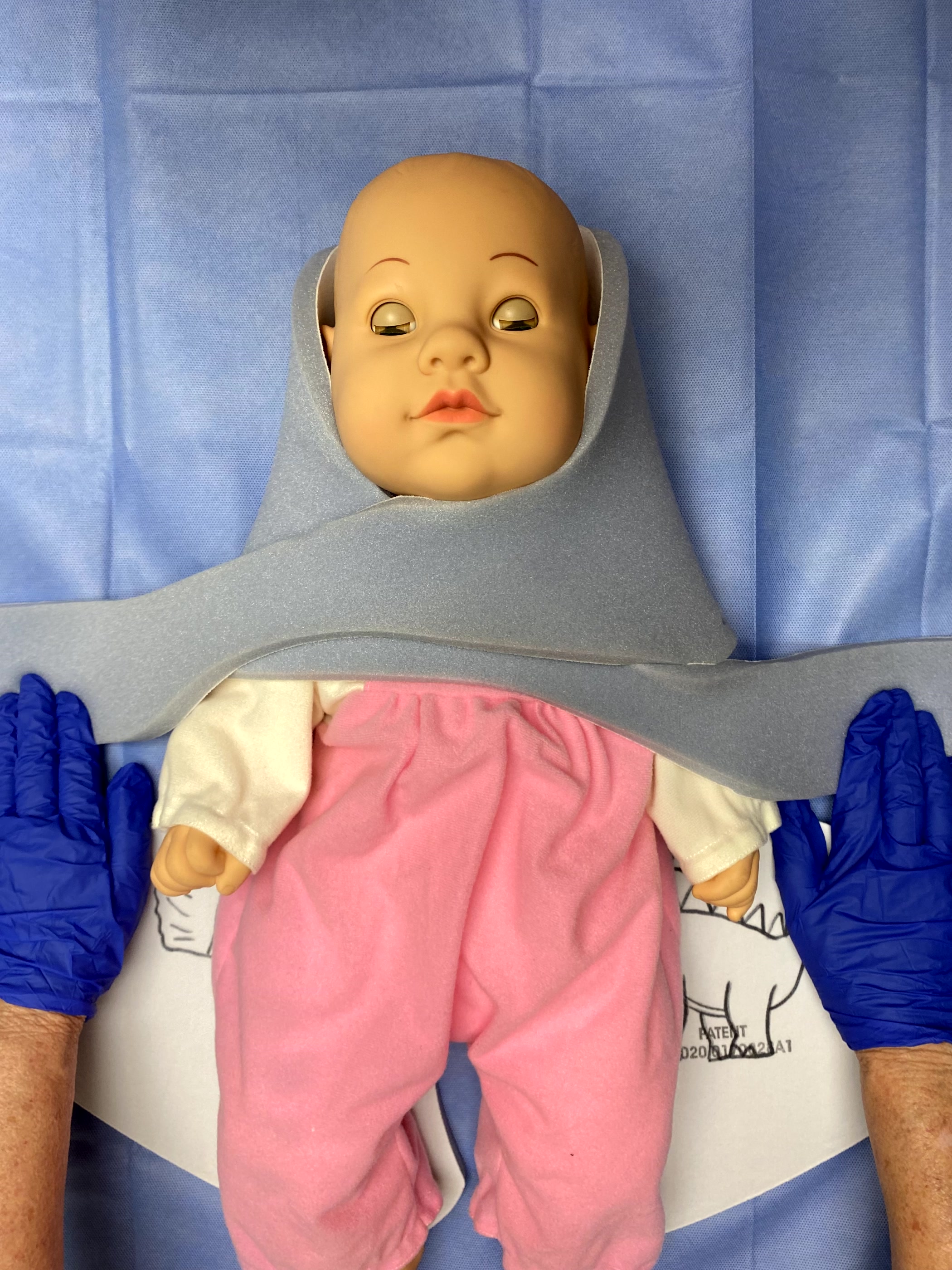

These images highlight a key advantage of the Pediatric Position Holder: it allows the head and torso to be secured together, offering better stability and minimizing movement during procedures. Traditional methods like the burrito wrap, papoose boards, or manual restraint often leave the head and torso independent, allowing unwanted motion. The Pediatric Position Holder ensures that the head and torso are held securely as a single unit, enhancing control and reducing stress for both the child and the caregiver. This design provides an effective, gentle, and consistent method for keeping pediatric patients safely positioned during medical procedures.
VERSATILITY AND MINIMAL INVASIVENESS
The Pediatric Position Holder (PPH) is designed to provide optimal procedural efficiency with minimal invasiveness. Its soft, flexible construction allows for a wide range of holds, whether needing to secure a single limb, upper body1 to achieving a complete body hold2 when necessary. This adaptability ensures that medical procedures are performed efficiently while maintaining the child’s comfort and minimizing stress for both the patient and caregiver. Additionally, the PPH’s ease of use reduces the need for technologists and/or parents to reach into the X-ray field, thereby lowering their exposure to radiation. The PPH improves on prior methods with its ability to provide the exact level of support needed, no more and no less, enhancing both patient care and procedural outcomes.

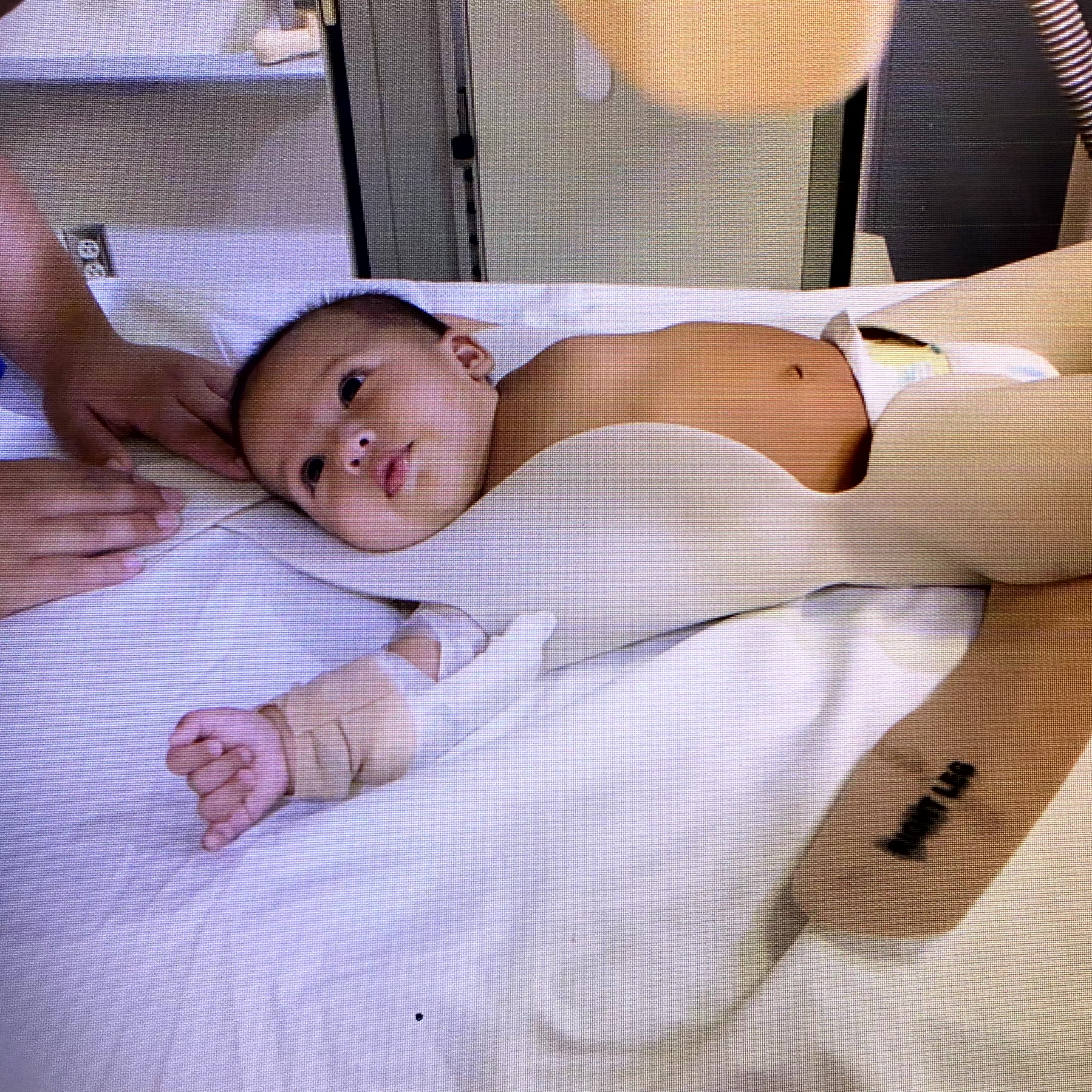
WHY THIS DESIGN?
The Pediatric Position Holder addresses several issues:
- Improves Workflow: The device simplifies the process of securing children during medical procedures, reducing the time and effort required by medical staff.
- Raises the Standard of Care: By providing a comfortable and secure method of immobilization, the holder reduces the stress and anxiety experienced by young patients, thereby improving the overall quality of care.
KEEPING A CHILD STILL DURING RADIOLOGY PROCEDURES, IV STICKS, AND SIMILAR MEDICAL TASKS IS CRUCIAL FOR SEVERAL REASONS:
- Accuracy of Results: For imaging procedures like X-rays, CT scans, or MRIs, even small movements can blur the images or produce artifacts. Clear and accurate images are essential for diagnosing and assessing medical conditions correctly.
- Reduced Need for Repeat Procedures: If a child moves during a procedure, the images may be unusable, necessitating retakes. This not only increases the time the child has to spend in the medical setting but also exposes them to additional radiation or discomfort.
- Decreased Procedure Time: When a child remains still, the procedure can be completed more quickly, minimizing the child’s exposure to the environment and reducing the overall stress and discomfort.
- Minimized Discomfort: For procedures like IV insertion, movement can lead to multiple attempts or difficulty in placing the needle properly. Keeping the child still can help ensure that the procedure is done accurately and with less pain.
- Safety: In some cases, movement can lead to accidental injuries, especially with equipment used in radiology or during invasive procedures. Staying still helps prevent accidents and ensures the safety of the child.
- Enhanced Communication and Cooperation: Teaching and encouraging a child to stay still helps them develop an understanding of medical procedures and fosters better communication with healthcare providers, which can be beneficial for future medical visits.
WRAP AND PAPOOSE RESTRAINTS VS. THE PEDIATRIC POSITION HOLDER
Wrap and Papoose Restraints
Advantages:
- Familiarity after countless years of use.
- Cost-effective compared to using a pillowcase or sheet for the burrito wrap.
Disadvantages
- May hinder ongoing respiratory and cardiovascular assessment and restrict respirations.
- Does not allow for easy access to the arms for peripheral intravenous line placement or venipuncture.
- Requires padding, not only for the papoose.
- Remember that our smallest patients often present with “big head and little body syndrome,” where their disproportionately large occiputs compared to their bodies can lead to issues maintaining a patent airway when lying supine on a hard surface.
- The papoose is time-consuming to sanitize between uses.
- Both the papoose and burrito wraps are considered restraints.
- The papoose utilizes straps and ‘hook and loop’ restraints.
Pediatric Position Holder
Advantages:
- No buckles or straps.
- Cushioned for comfort.
- Clear chest for unobstructed respirations.
- Accessible for arm IV placements.
- Supports head and neck.
- Easy to sanitize.
- Not considered a restraint.
- Signifies a commitment to patient-centered care and safety.
Disadvantages:
- None.
TESTIMONIALS
PARENT TESTIMONIALS

Mom of 6 month old infant, Lubbock, TX
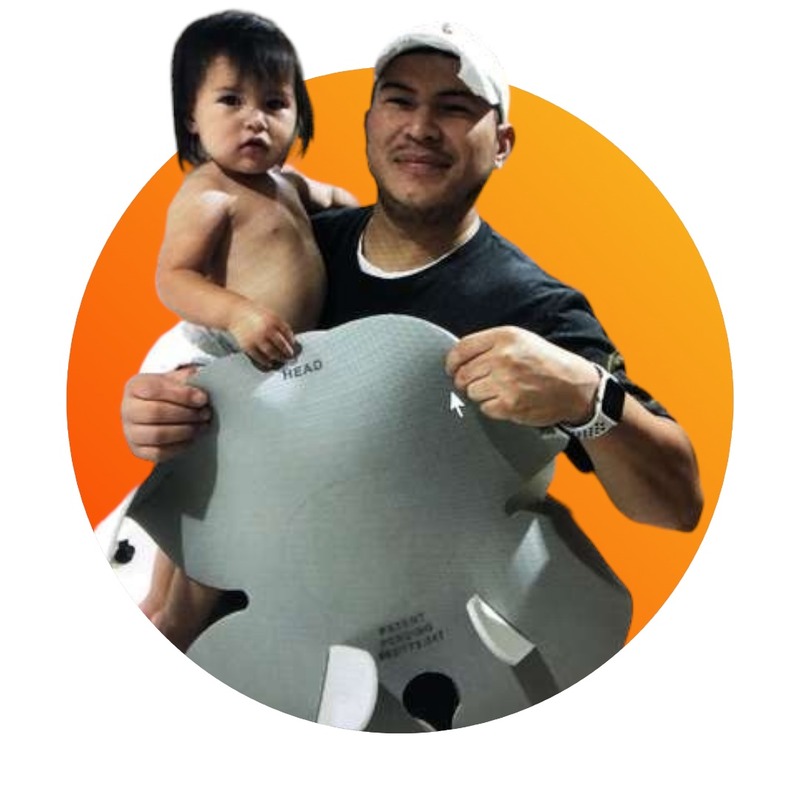
Dad of 2 year old from Clovis, NM
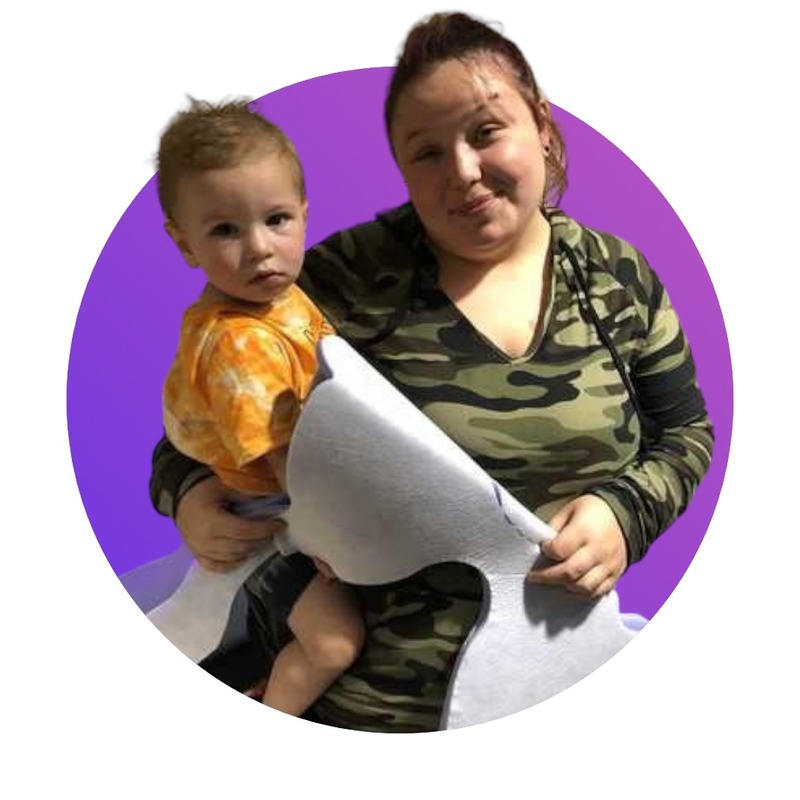
Mom of 16 month old from Hobbs, NM
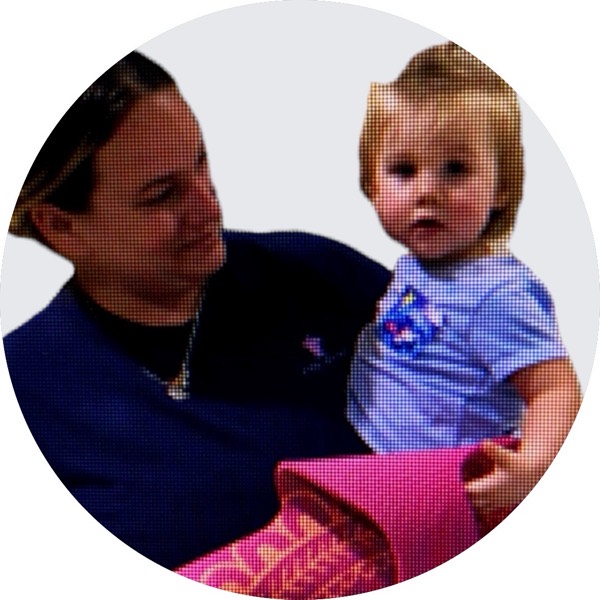
Mom of 10 month old from Levelland, Tx
TECHNOLOGISTS TESTIMONIALS
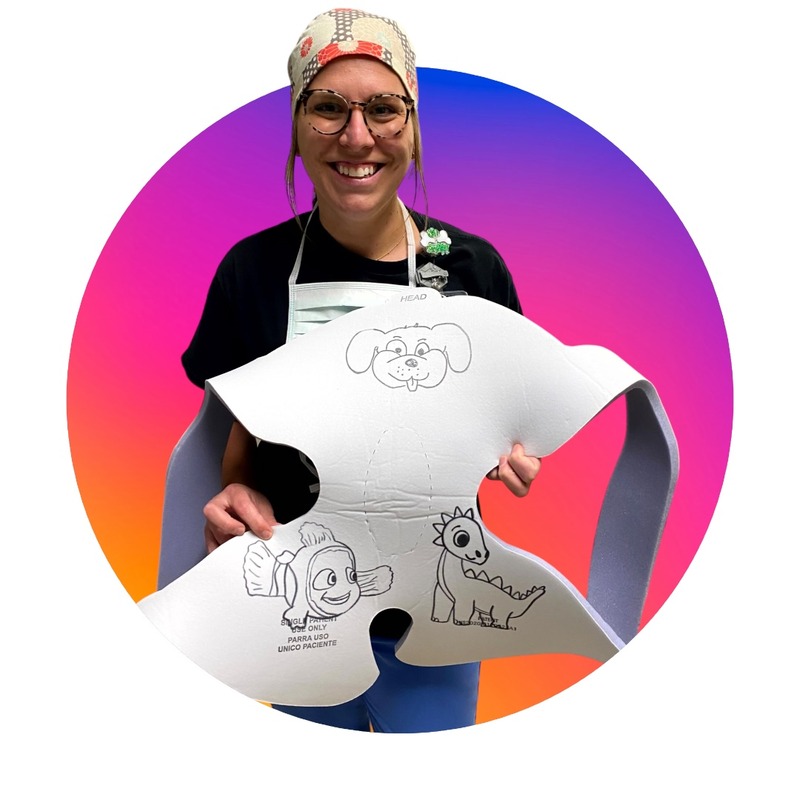
Pediatric Nurse, University Medical Center
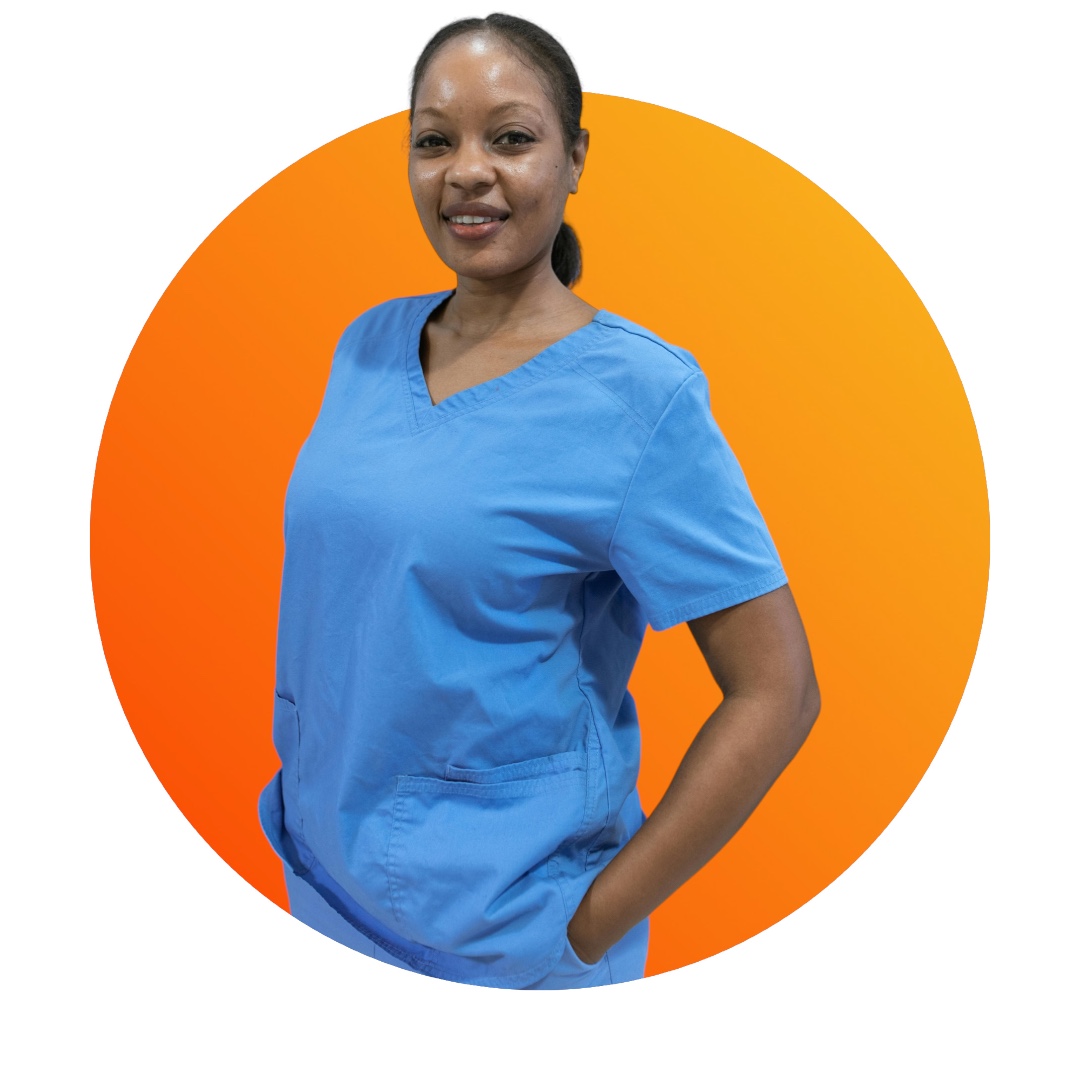
Radiology Technician, University Medical Center
CHILD TESTIMONIALS
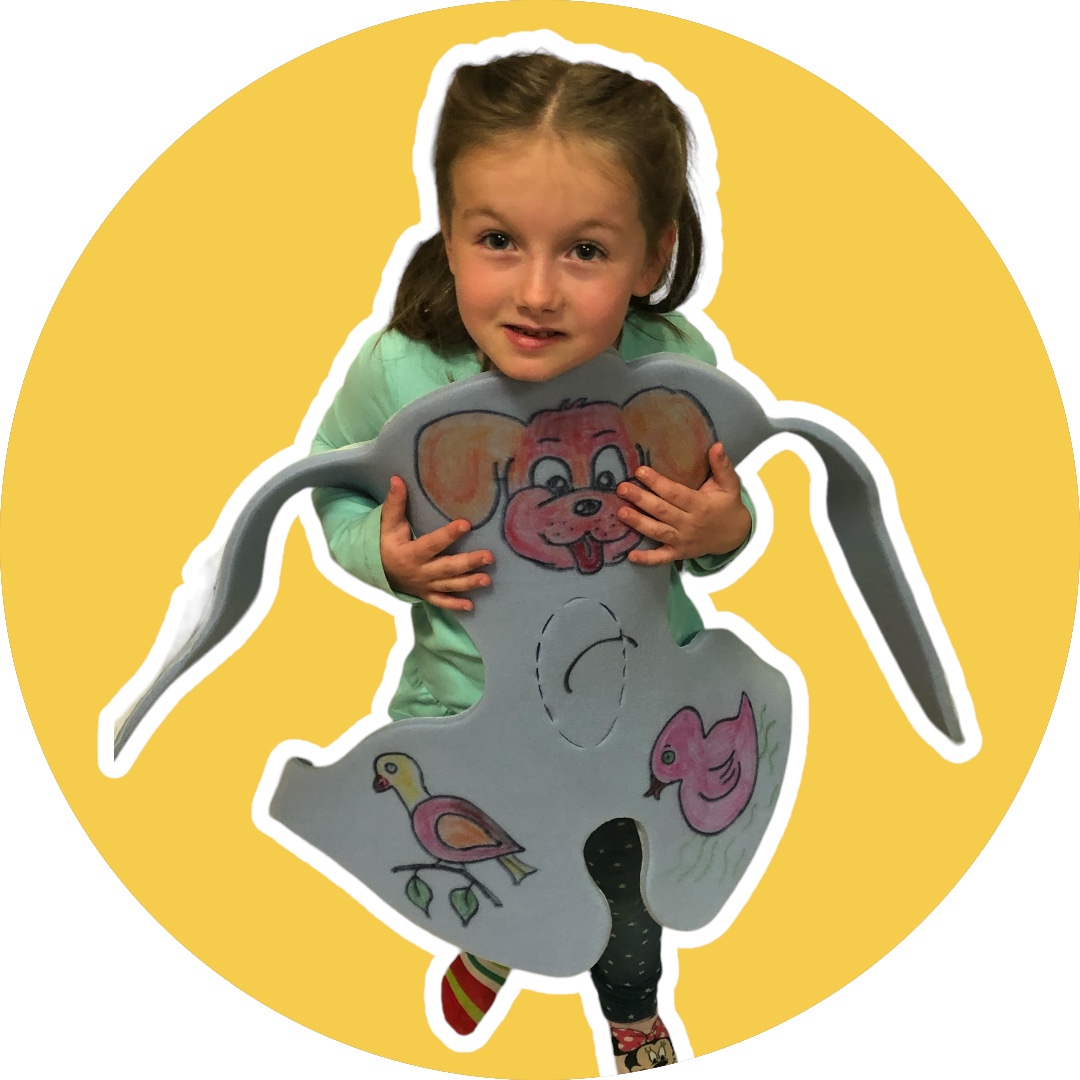
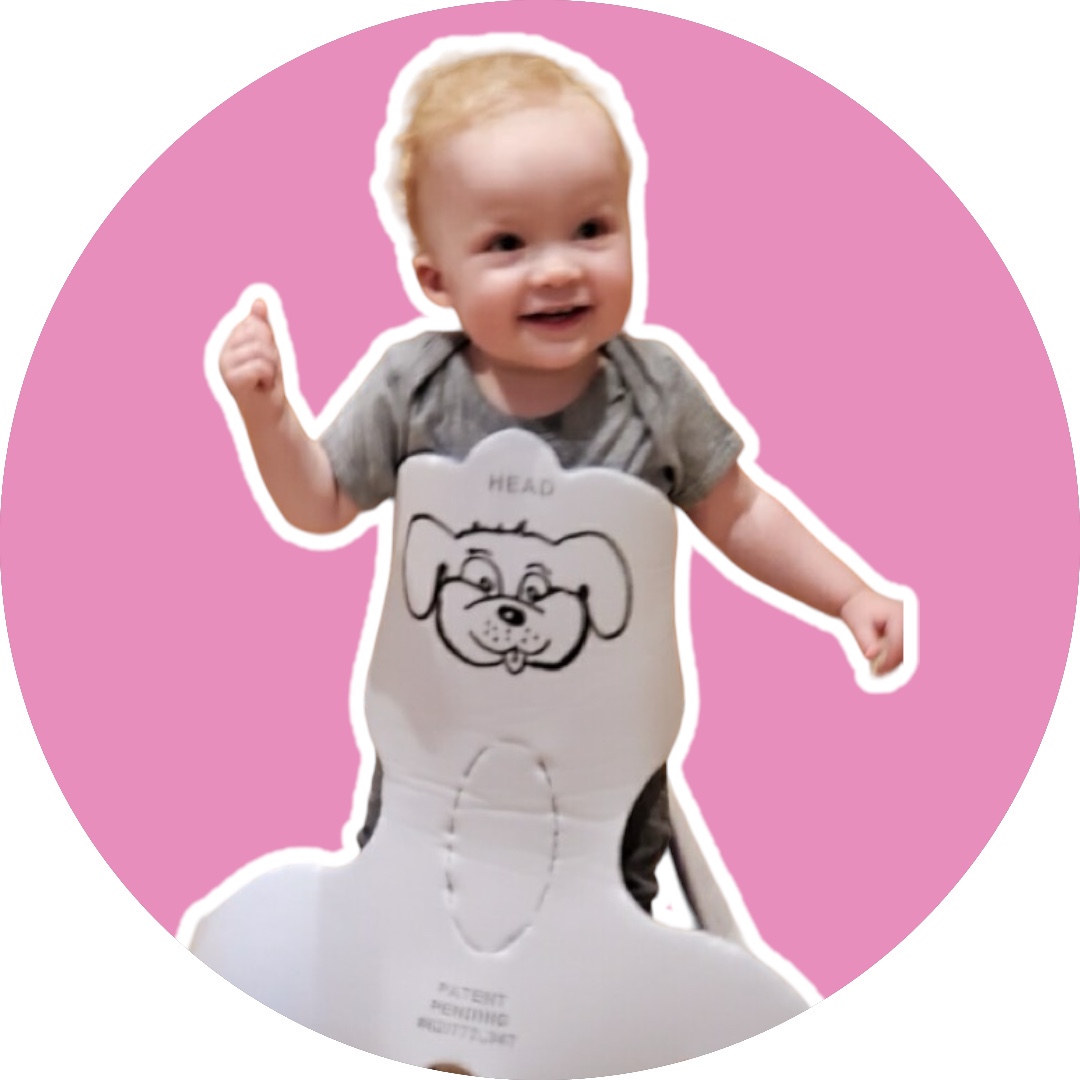
HANDLING WITHOUT HOLDING
The Role of the Pediatric Position Holder in the Absence of Certified Child Life Specialists (CCLS)
Certified Child Life Specialists (CCLS) are educated and clinically trained in understanding the developmental impact of illness and injury. They play a crucial role in improving patient and family care, satisfaction, and overall experience. In healthcare and community settings, CCLS help infants, children, youth, and families cope with the stress and uncertainty of acute and chronic illness, injury, trauma, disability, loss, and bereavement. They provide evidence-based, developmentally and psychologically appropriate interventions, including therapeutic play, preparation for procedures, and education to reduce fear, anxiety, apprehension, and pain.
The Vital Role of CCLS
Child life specialists use various techniques to support children through difficult procedures:
The availability of CCLS is not consistent, especially in smaller clinics or hospitals. Many countries do not have CCLS, and there are millions of procedural events annually worldwide where help with immobilization and support for suturing, nasogastric tubes, urinary catheters, and other minor procedures is required. In the absence of a CCLS, what are the mechanical options for holding the child motionless?
The Pediatric Position Holder (PPH) as a Middle Ground
The Pediatric Position Holder is a middle-ground between the preferred methods of the CCLS and the invasive methods currently in use. The Pediatric Position Holder (PPH) offers an optimal solution. It provides a gentle and minimally invasive alternative to traditional restraint methods, ensuring that children are positioned securely and comfortably without the need for direct physical holding.
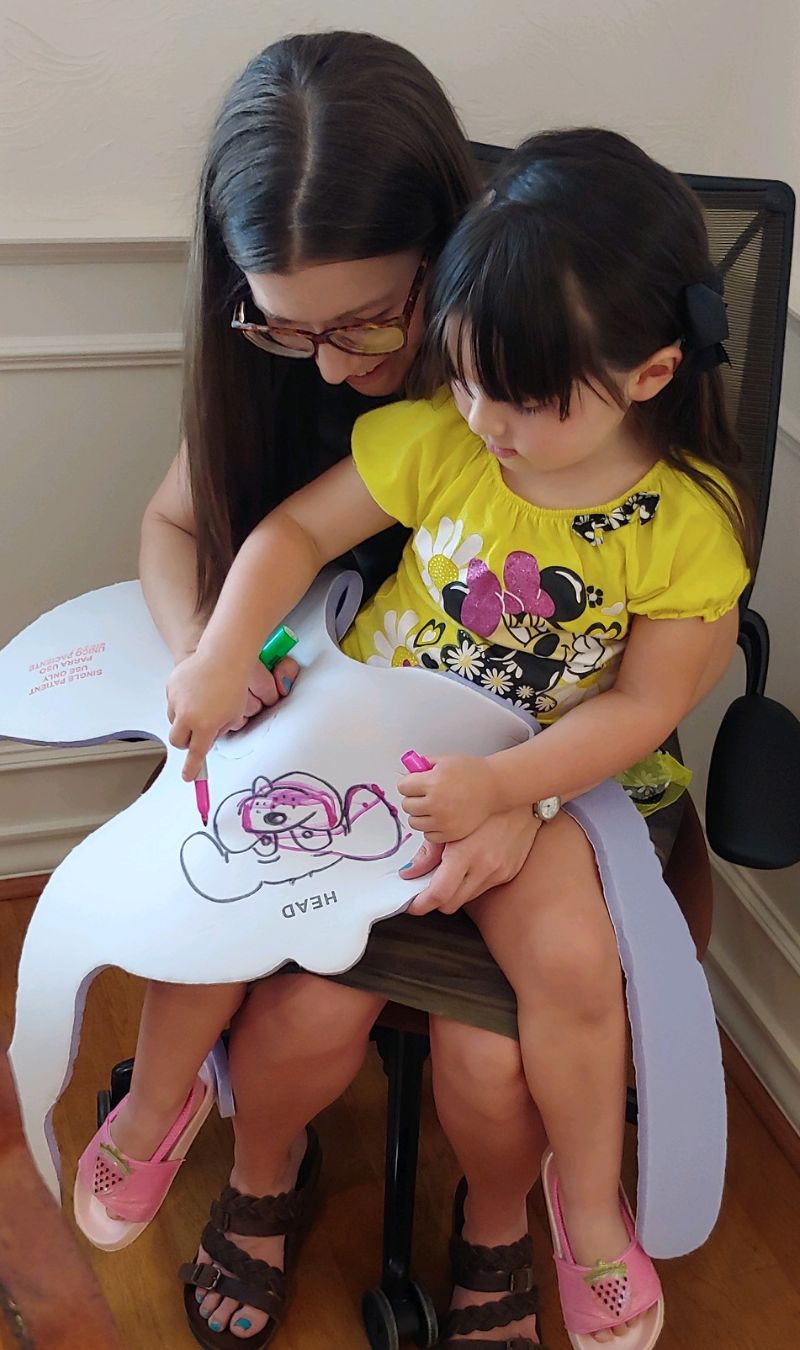
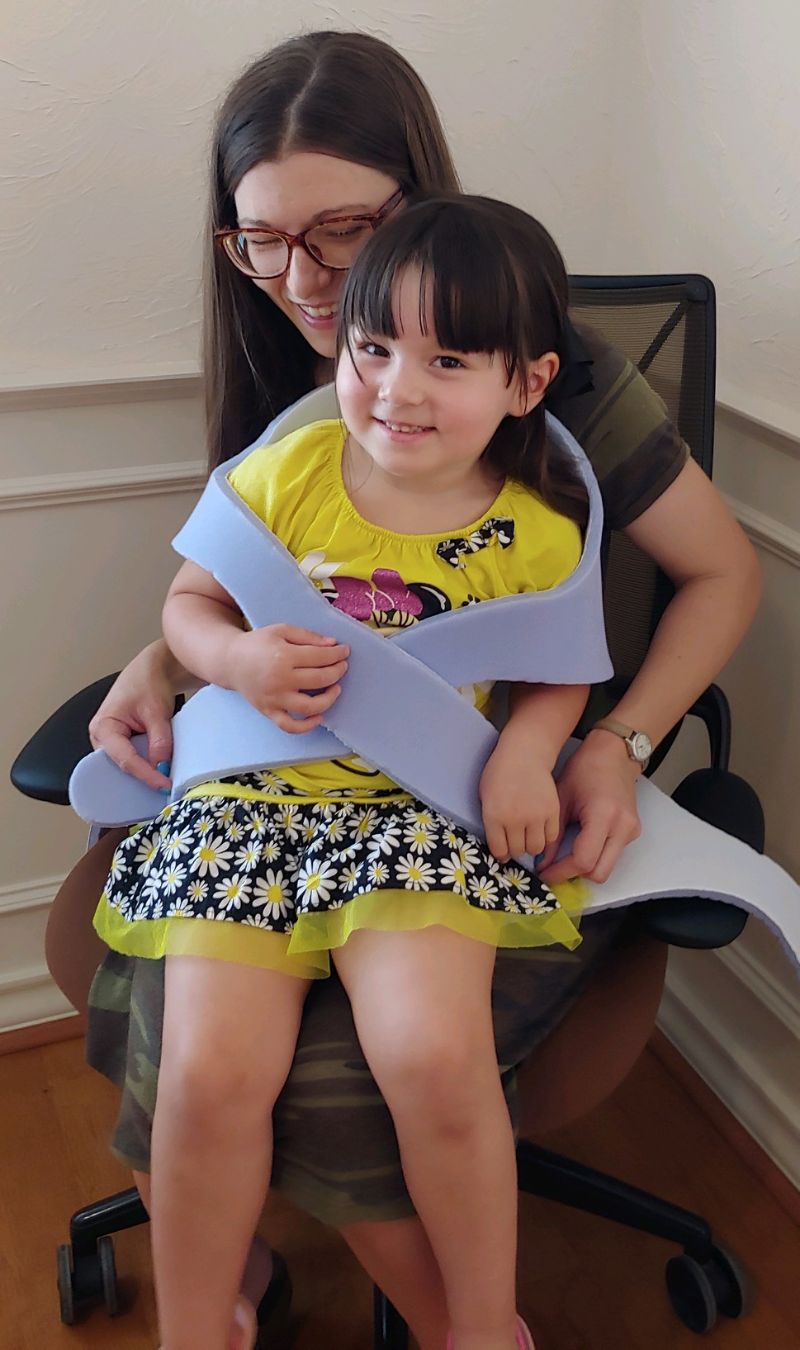
APPLICATIONS
- Radiolucent for x-ray imaging
- Standardizes procedures worldwide
- Colorful and engaging design to distract children
- Less invasive and not restrictive
- Selective in application
- Adheres to the principle of justice by providing equal care standards globally
THE PEDIATRIC POSITION HOLDER IS A STANDALONE DEVICE THAT DOES NOT REQUIRE AN ADDITIONAL COMPONENTS OR ACCESSORIES.
The Pediatric Position Holder (PPH) is designed to be used under the direct supervision of a healthcare professional, ensuring proper application and patient safety. While it is primarily a professional product, its simplicity and safety features could make it suitable for over-the-counter retail in the future.
THE PPH could be offered in either or both of the following options:
- Single Use: Single patient, disposable
- Durable: Multiple uses, multiple patients
THE PPH is available in both sterile and non-sterile options:
- Sterile: For single patient use
- Non-Sterile: For multiple patients, the durable holder simply needs to be cleaned between uses with an approved antimicrobial spray, which most facilities and medical offices already use. This process takes only seconds and allows the holder to dry quickly.
YEARLY PROCEDURAL NEED
Based on informal and anecdotal sources, including Google, opinions of fellow pediatric radiologists, and other resources - several million pediatric procedures could benefit from the PPH:
- Children’s Hospitals: 1,000,000
- General Hospitals: 200,000
- ER Physicians: 1,000,000
- Community Health Care Clinics: 1,000,000
- Pediatrician Offices: 300,000
- Pediatric Urology: 100,000
- Pediatric Cardiology: 100,000
- Pediatric Orthopedics: 100,000
- Pediatric Nurse Practitioners: 100,000
- Pediatric Physician Assistants: 100,000
- Phlebotomists: 1,000,000
ADDITIONAL CONTEXT AND SOURCES FOR THESE ESTIMATES:
- Approximately 1/30 children will need immobilization, equating to 1,000,000 annually.
- Global voiding cystourethrograms total 20 million annually, with 5 million performed on children.
- There are over 188,546 pediatric nurse practitioners currently employed in the United States.
- 1,000,000 phlebotomy procedures are conducted annually in the USA for lead poisoning and hemoglobin levels through the Medicaid program, with the majority requiring immobilization.
- 5 million pediatric admissions (hospital admissions) annually, with many requiring immobilization for blood draws.
Pediatric patients often require procedural assistance during radiology procedures due to conditions like urinary tract issues, gastrointestinal conditions, and other common pediatric concerns. These procedures affect millions of children annually in the United States, highlighting the importance of a device that can provide gentle and effective support.
ESTIMATED NUMBER OF PEDIATRIC PATIENTS ANNUALLY:
- 1,000,000 children needing procedural assistance for various procedures
- 5 million pediatric admissions requiring procedural assistance for blood draws
- 5 million voiding cystourethrograms performed globally, with a significant portion in the US
WHICH MEDICAL PROFESSIONALS WOULD BENEFIT FROM THE PEDIATRIC POSITION HOLDER?
- Pediatric providers
- All sub-specialty pediatric providers (e.g. pediatric orthopedics, pediatric urology, pediatric cardiology)
- ER providers
- There are 58,500 Certified Child Life Specialists in the United States, as of 2016.
DEVICE CLASSIFICATION
| Device | Pediatric Position Holder |
|---|---|
| Regulation Description | Pediatric position holder |
| Definition | Device used to physically restrain a pediatric patient for a short surgical or clinical procedure such as circumcision. Not intended for prolonged positioning. |
| Physical State | Made of non-permeable and non-porous material |
| Technical Method | The pediatric position holder is a device made of non-permeable and non-porous material and molded with smooth edges for single patient use or multi-patient reuse. Holders that use disposable straps are used to hold an infant or a child in an anatomically correct position during short medical procedures such as circumcision. The holder is used only under constant supervision of a medical professional in a health care facility and is for prescription use only. |
| Target Area | Pediatrics |
| Regulation Medical Specialty | General Hospital |
| Review Panel | General Hospital |
| Product Code | PRN |
| Premarket Review | Office of Gastrorenal, ObGyn, General Hospital, and Urology Devices (OHT3) |
| Drug Delivery and General Hospital Devices, and Human Factors | (DHT3C) |
| Submission Type | 510(K) Exempt |
| Regulation Number | 880.5680 |
| Device Class | 1 |
| Product Life Cycle (TPLC) | TPLC Product Code Report |
| GMP Exempt? | 10 |
APPENDIX
CONCEPTUAL DESIGNS
Conceptual drawings of the Pediatric Position Holder (PPH) feature a friendly design to comfort young patients during medical procedures. Colors/designs could be customized based on the preferences of the hospital or facility.

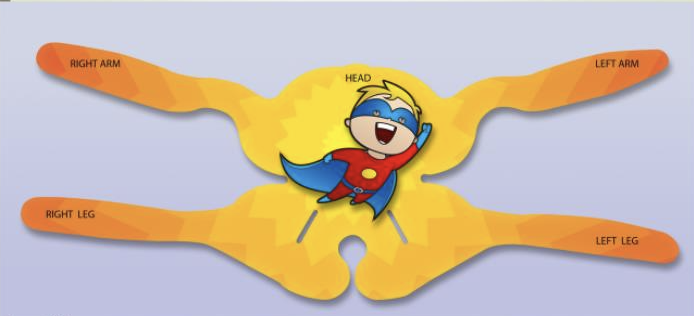
TESTING AND TRIALS
To provide a glimpse into the testing and real-world trials of The Pediatric Position Holder (PPH), here is a collection of photos showcasing various stages of its development. These images capture the dedication and effort put into ensuring that the device meets the highest standards of safety, comfort, and effectiveness.
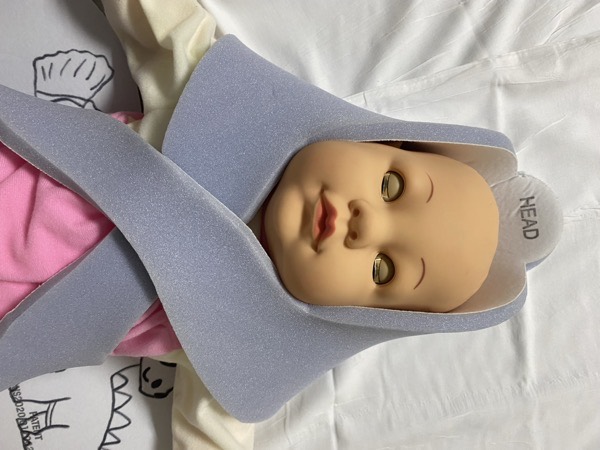
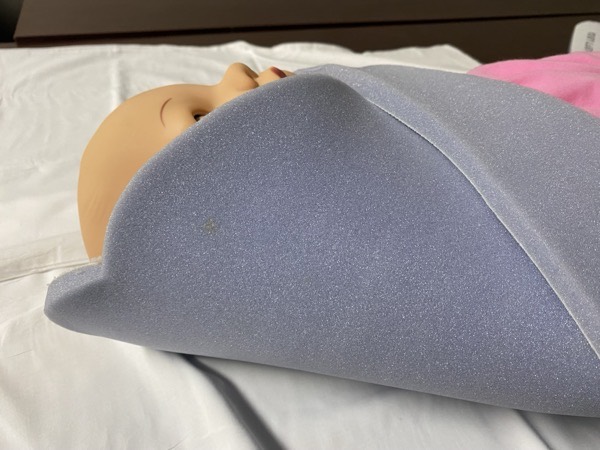

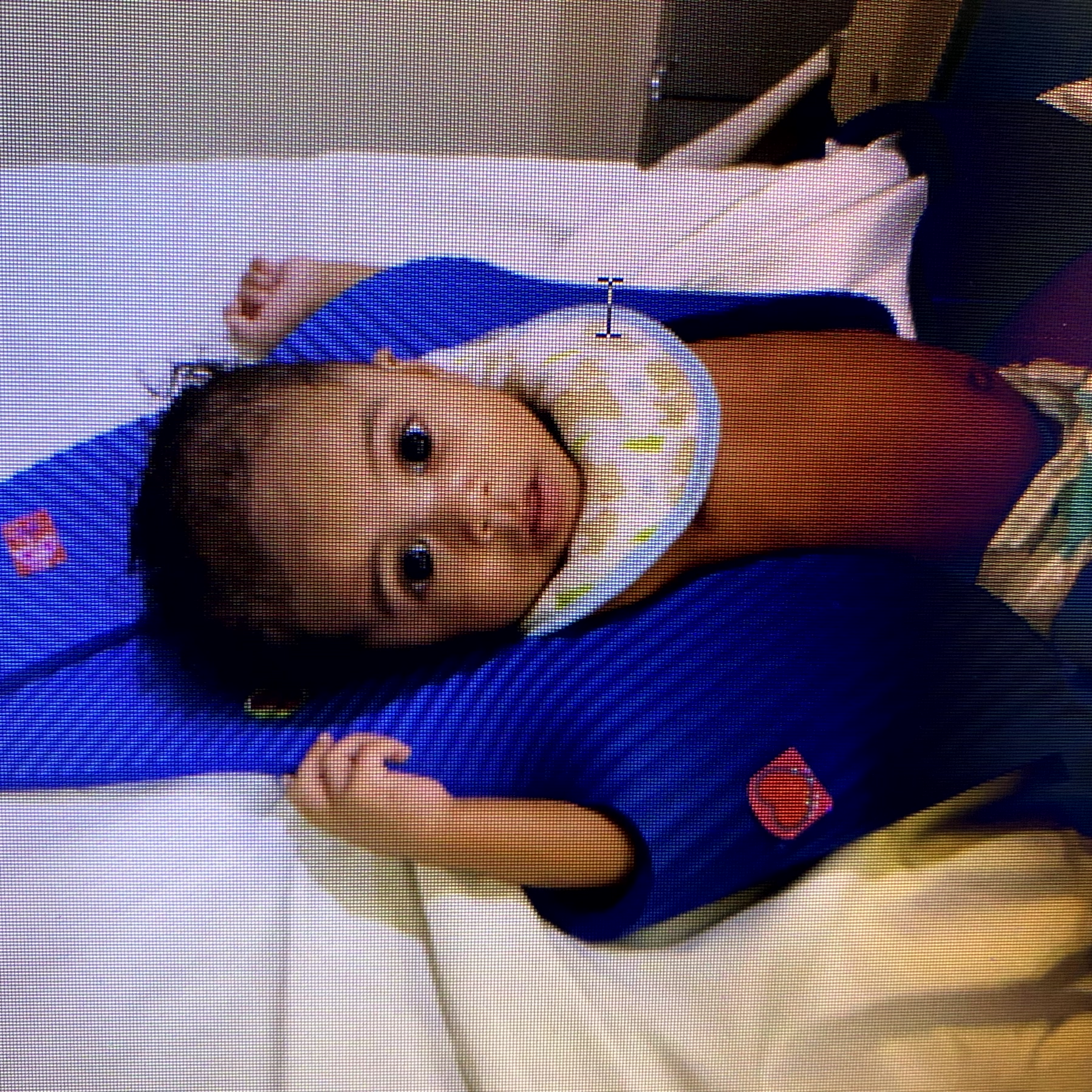
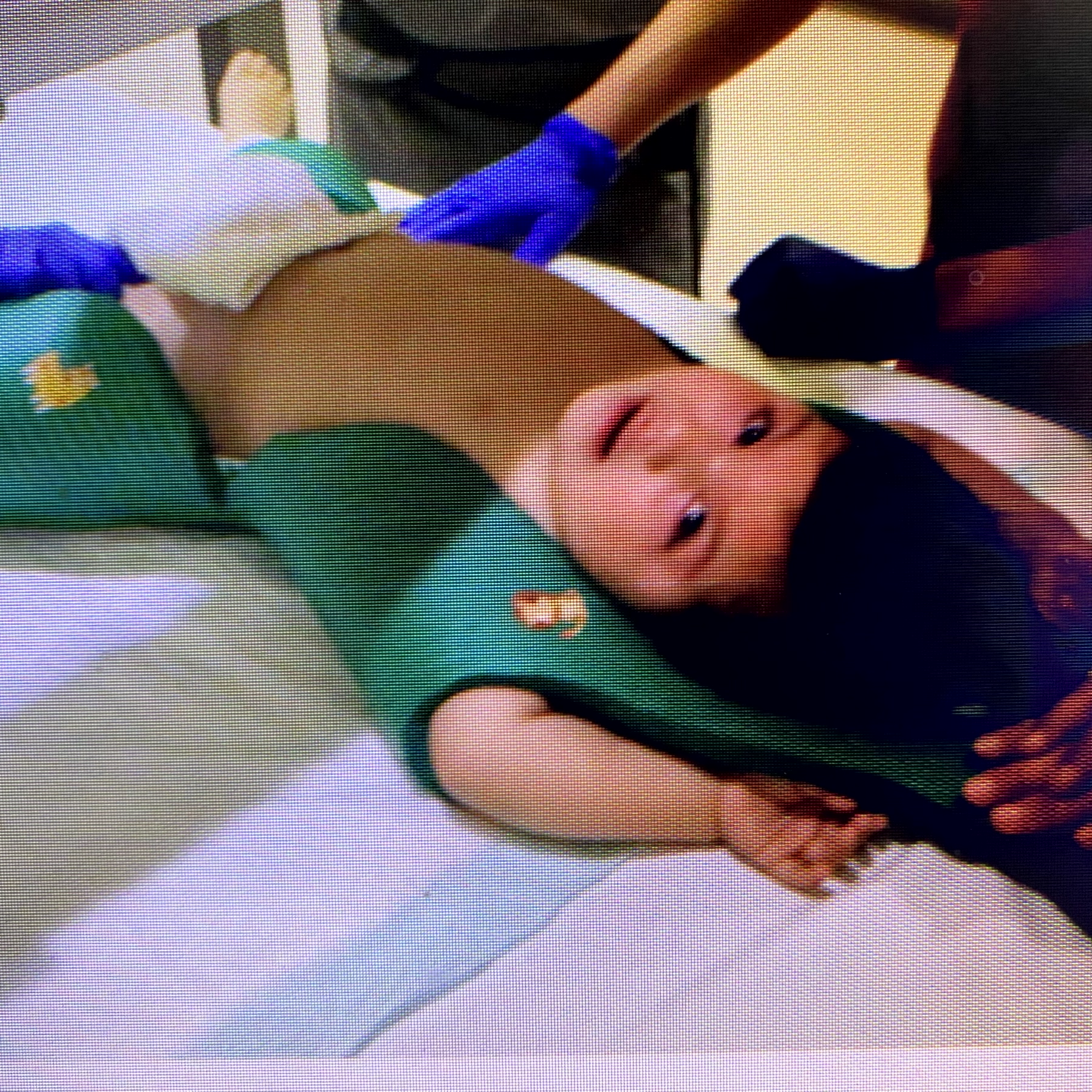
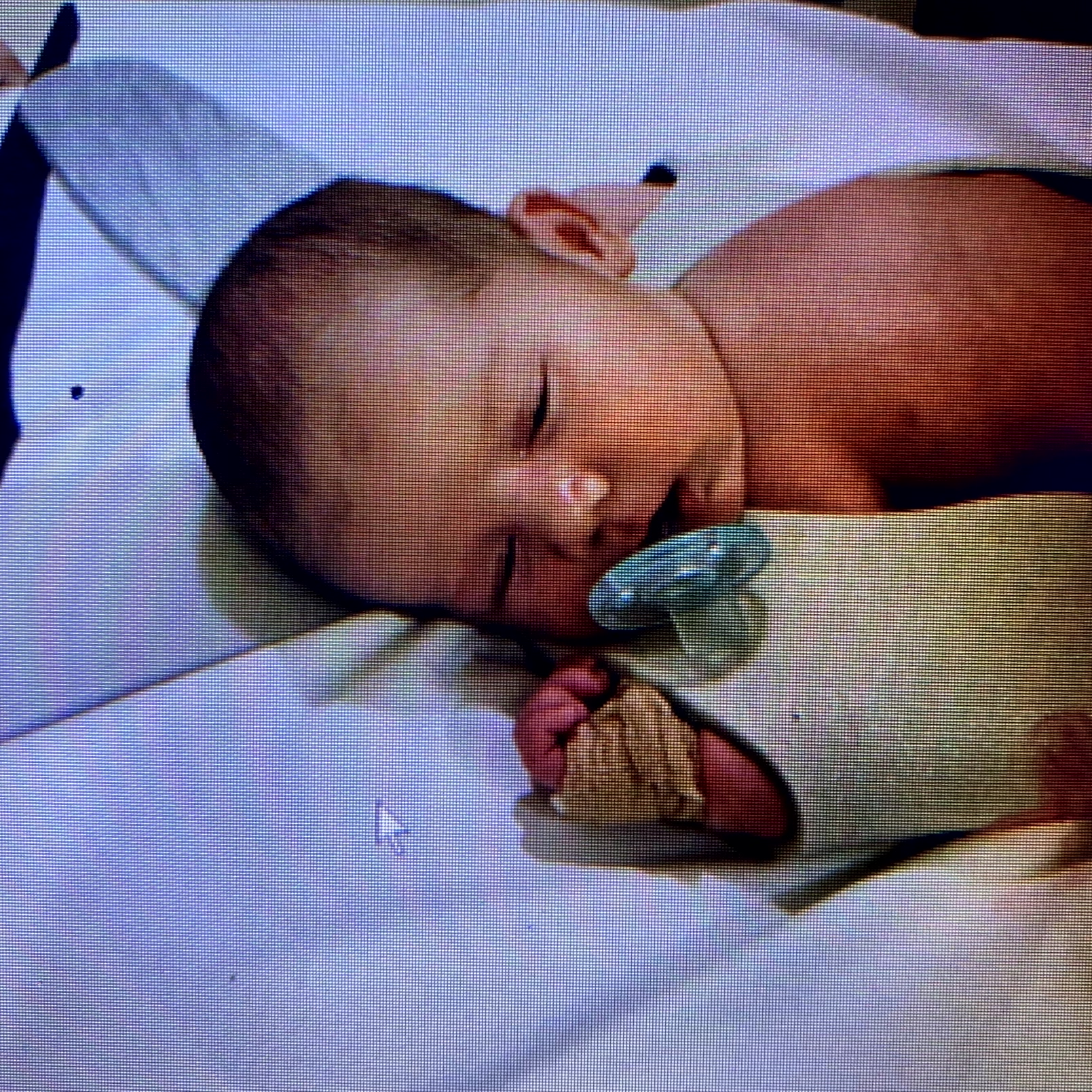


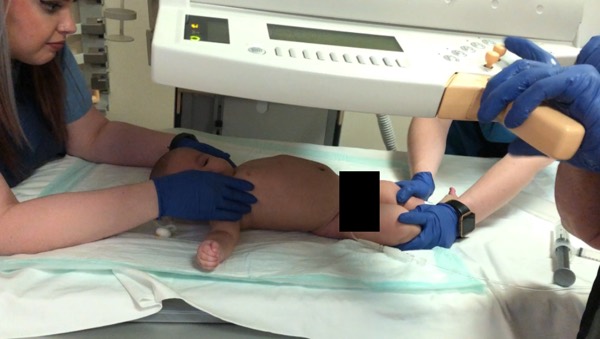
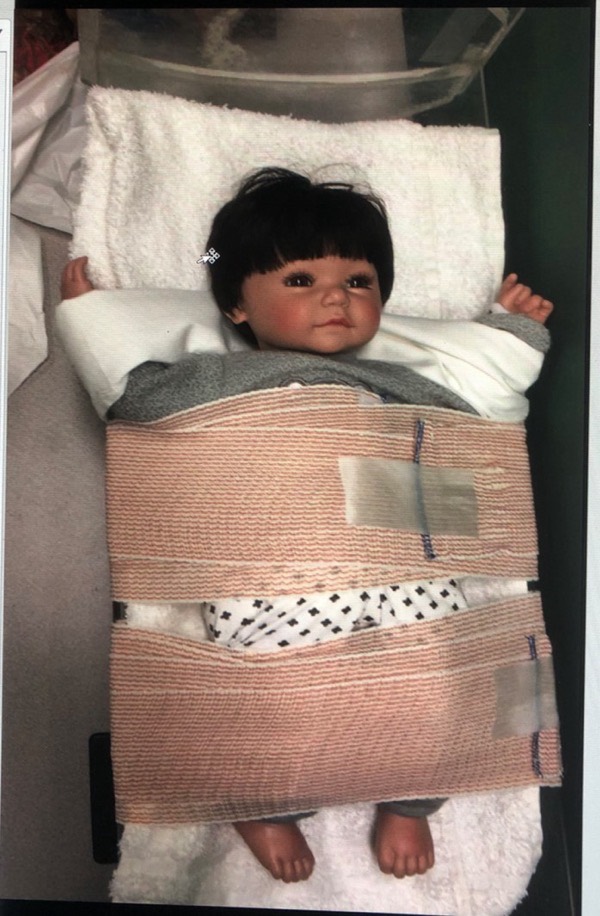
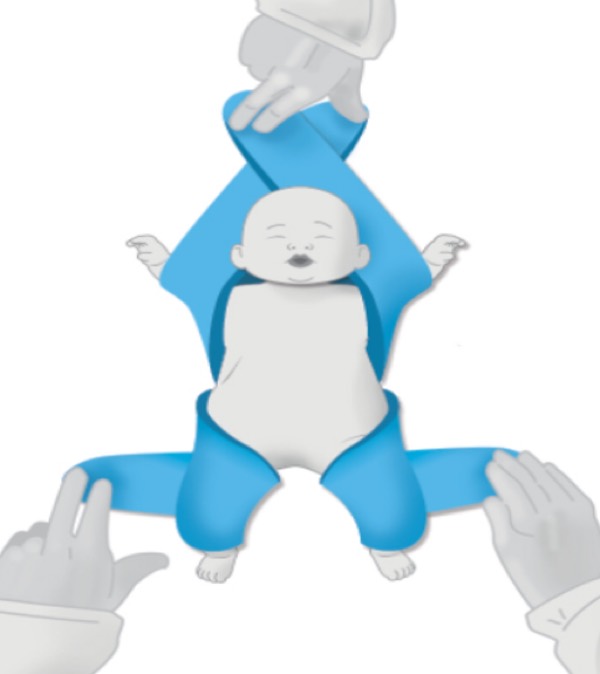
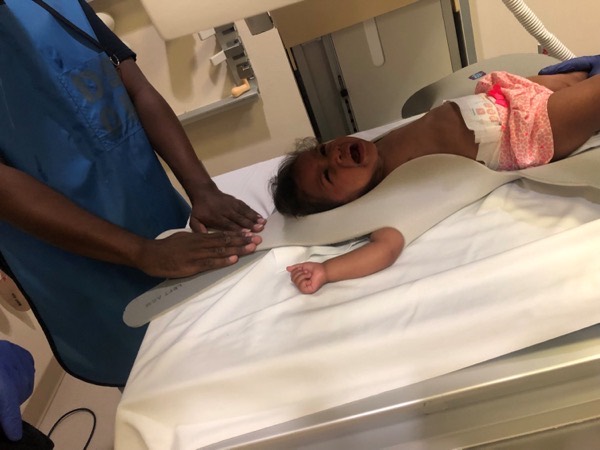
ABOUT US

Frank Louis Quattromani, M.D. Pediatric Radiologist
- University Medical Center, Lubbock, Texas
- Clinical Professor of Pediatrics and Pathology, Texas Tech University School of Medicine, Lubbock, Texas
- Former Radiology Consultant to the office of the United States Army Surgeon General
- U.S. Army Colonel (Medical Department), Retired
- Pediatric Radiology Fellowship, Cincinnati Children’s Hospital (1974-76)
- Wake Forest University (Class of ‘62)
Patricia Rae Quattromani Co-Inventor and Product Designer
REFERENCES
- DeBoer, S. et al. (2007). Infant Immobilization and Pediatric Papooses: We’ve Come a long Way. Journal of Emergency Nursing, 33(4), 451-455.
- Brown, J.C. (2011). The “Superhero Cape Burrito”: a simple and comfortable method of short-term procedural restraint. J Emerg Med, July, pp. 74-76.
- Principles of Biomedical Ethics. Beauchamp, T. L., & Childress, J. F. Oxford University Press. 2013. Available at: https://archive.org/details/principlesofbiom0000beau_k8c1
- Barkey, M. (2008). Comfort Measures for Invasive Procedures: A Major Paradigm Shift in Pediatric Practice. Child Life Council Bulletin, 26(3).
- Ward, V.L. et al. (2008). Pediatric Radiation Exposure and Effective Dose Reduction During Voiding Cystourethrography. Radiology, 249(3).
- American College of Radiology. Advocating for use of the ALARA principle.
- Tapiovaara, M.J. et al. (1999). A Search for improved technique factors in pediatric fluoroscopy. Physics in Medicine and Biology, 44(2).
- Linder, J.M.B. (2017). Safety considerations in immobilizing pediatric clients for radiography procedures. Journal of Radiology Nursing, 36(1), 55-58.
- Furlow, B. (2011). Radiation Protection in Pediatrics Imaging. Radiologic Technology, 82(5), 421-439.
- Alexander, M. (2012). Managing Patient Stress in Pediatric Radiology. Radiologic Technology, 83(6), 549-560.
- Klays, D. (2016). Radiation Protection in Pediatric Radiography-Introducing Some Immobilization and Protection Equipment. Pediatric Today, 12(1), 81-86.
- Weinstock, M. (2020). Q&A: Children’s National CEO aims to tailor treatments to his young patients. Modern Healthcare, January 11.
CONTACT
For more information contact us at:
Phone: (806)778-2183 or (806)241-0373
